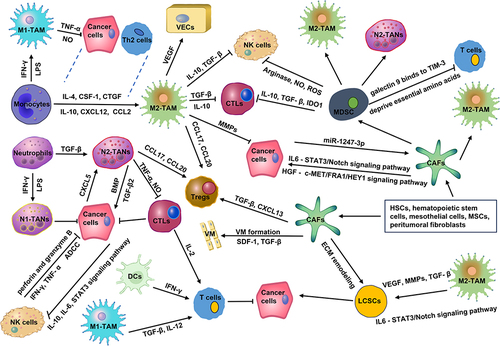Figures & data
Figure 1 The complex network of interactions between cellular components in TME. In TME, pro-tumor cells promote angiogenesis, ECM remodeling, and immune escape via secreting various cytokines and chemokines, such as VEGF, MMPs, CCL17, CXCL20, and so on. Meanwhile, pro-tumor cells also inhibit the function of anti-tumor cells through the release of several cytokines, such as IL-10, NO, TGF-β, ROS, and so on. The imbalance between pro-tumor strength and anti-tumor strength forms an immunosuppressive TME, which significantly promotes the malignant progression as well as the recurrence, metastasis, and drug resistance of HCC.

Table 1 The Functions and the Targets of Various Growth Factors in TME of HCC
Table 2 Immune Checkpoint Inhibitors in HCC
Table 3 CAR-T and TCR-T Cell Therapy
Table 4 Immunotherapy Combined with Targeted Therapy for HCC

